This website uses cookies
This website uses cookies to enable it to function properly and to analyse how the website is used. Please click 'Close' to accept and continue using the website.


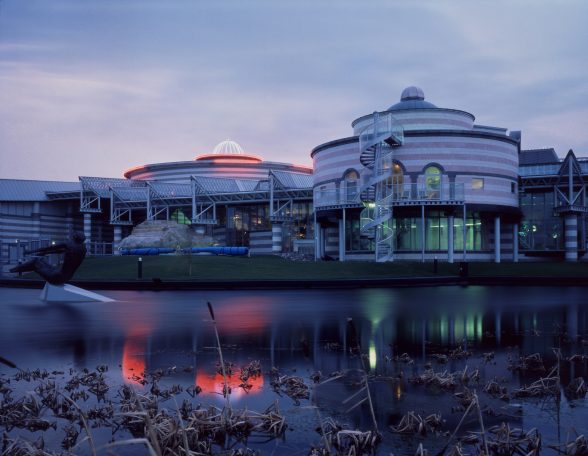
Image: FaulknerBrowns
We’re thrilled to announce that Doncaster Dome leisure centre (FaulknerBrowns, 1986-89) has been Grade II listed, following an application by C20 Society. The listing of this Post-Modern pleasure palazzo is another success for C20’s Leisure Centres Campaign, following the addition of Swindon’s Oasis (Gillinson Barnett & Partners, 1974-75) and Bradford’s Richard Dunn Sport Centre (Trevor Skempton, 1974-78) to the national register.
Described at the time of its opening as a “mock Pantheon dedicated to the gods of leisure”, Doncaster Dome represents the culmination of architect FaulknerBrowns work on several leisure projects during this period. Constructed on a discarded 320-acre former coal-field site, the building was opened in 1989 by Princess Diana and its success was such that it recorded a million visitors in 1990.
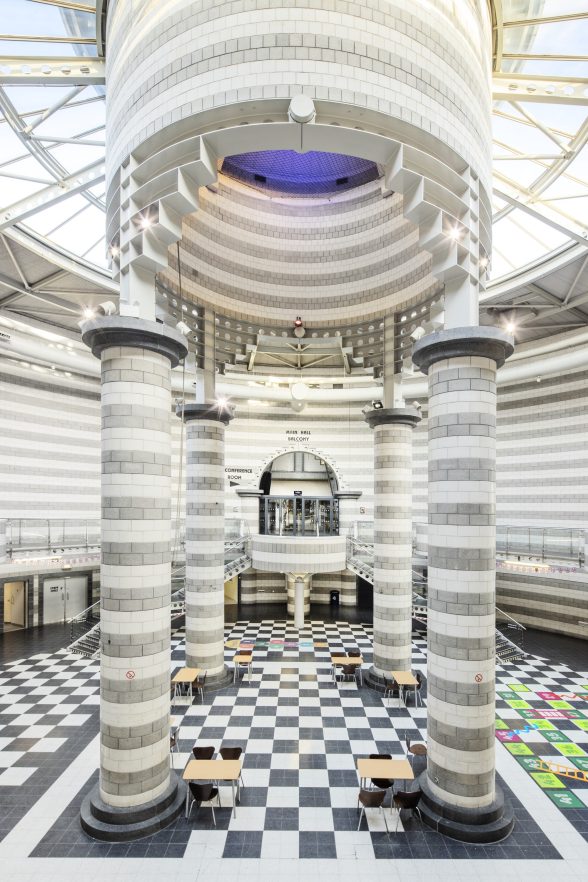
Image: Historic England Archive
The irregular design features many Post-Modern motifs throughout; mock pilasters adorn the health suite like a Roman baths, with banded masonry creating a polychromatic effect, drawing allusions to classical buildings like Siena Cathedral. Elsewhere the 650 tonnes of structural steelwork, in tapered perforated I-section columns, meet the masonry columns in a satisfying junction of old and new technologies. Perhaps the most striking space is the atrium: a glazed rotunda, 30m in diameter and 19m high, with striped columns around the perimeter holding up the steel oculus, described as a ‘mock Pantheon dedicated to the gods of leisure’.
Among the attractions advertised were the largest flume ride in Britain – which meanders through the entrance mall and atrium and drops three and a half storeys over a 120m distance – plus the first experiment in a ‘leisure ice’ feature, applying the principles of a free-form pool to an ice skating rink. The centre’s four principal areas are all arranged around a circulation spine that encourages casual visitors to explore the building and provides window views of the various activities in progress. The concert venue at the centre has hosted myriad performances, from Johnny Cash to Ed Sheeran, Pulp to the Prodigy.
The Dome was envisioned as an extension of the city, not an entity that was separate from it, and is still in use today. Despite the vast scale of the design, the range of spaces have avoided the need for any alterations. Besides minor changes to some doors and fittings, the design remains in its original form, successfully serving its original purpose.
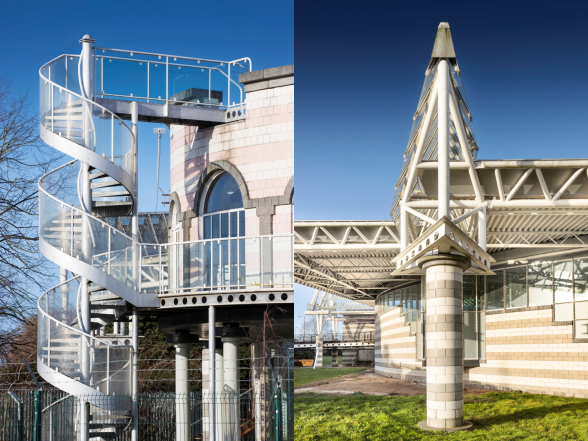
Image: Historic England Archive
Leisure Centres Campaign
Launched in 2022, C20’s Lesiure Centre Campaign was a new initiative to celebrate the underappreciated architecture of the leisure centre and to protect the most historic examples. 10 key examples from across the UK were submitted for listing to Historic England, Historic Environment Scotland, and Cadw in Wales.
Leisure centres are places of community identity and an intensely evocative part of our shared social heritage: flumes, verrucas, palm trees, the smell of chlorine, the sound of laughter – this is the backdrop to childhood experiences and families at play. Yet they’re also some of the most architecturally innovative structures of the late twentieth century, combining environmentally controlled environments with soaring engineering and playful pop imagery. Is there any other building-type that’s as wildly varied and downright eccentric? Space-age geodesic domes, diamond glazed pyramids, castellated forts, brutalist elephants and Moorish postmodern palaces are just a few of the highlights of this idiosyncratic genre.
Some key examples remain from the 1970s boom in publically-funded municipal leisure centres, others are playful evolutions on the theme from more recent decades, while the exotic continental import of Center Parcs signalled a later shift to a packaged holiday experience. Most were designed around a free-form tropical pool, others focussed on hard courts and recreational sports. All are underappreciated and unexamined buildings in need of our support.
Click here to read more.
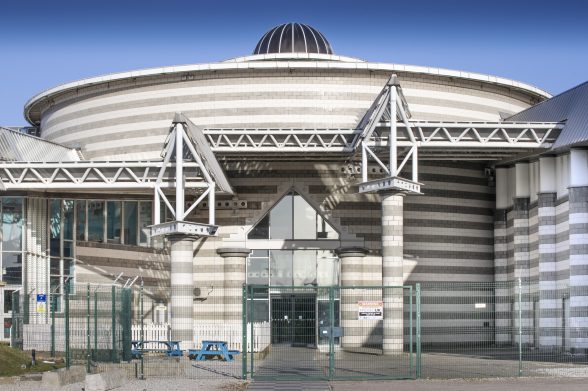
Image: Historic England Archive
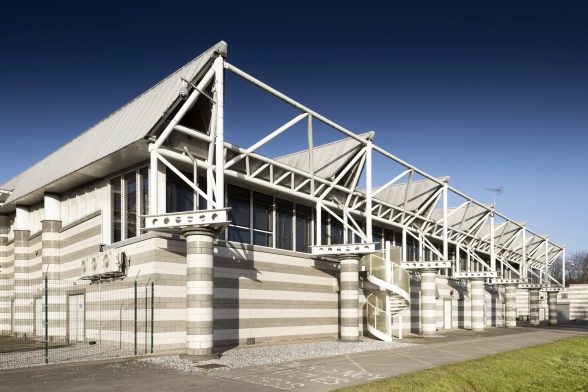
Image: Historic England Archive

Become a C20 member today and help save our modern design heritage.